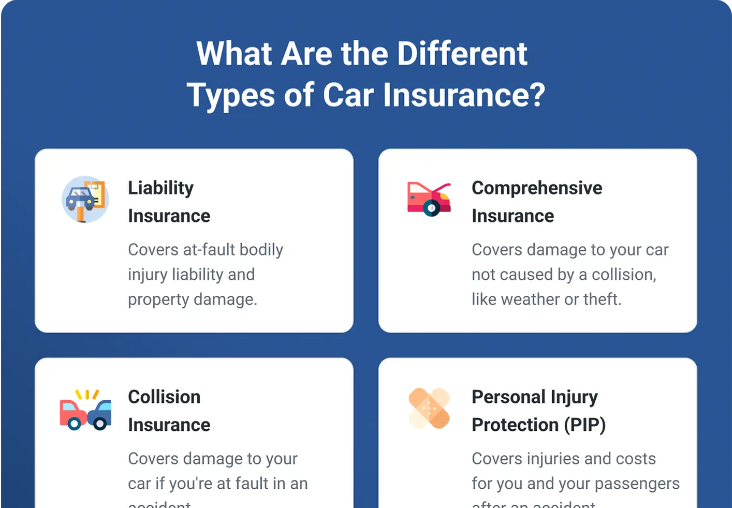Car Insurance Explained: Coverage Types and What They Mean
Car insurance isn’t just a legal requirement in most places it’s also one of the smartest ways to protect your finances. But let’s be honest: car insurance can be confusing. With so many coverage types and policy terms, it’s easy to feel overwhelmed.
This guide breaks down the main types of car insurance coverage in plain English, so you can make confident, informed decisions about your policy.
🚗 Why Car Insurance Matters
Car insurance is designed to protect you financially in the event of an accident, theft, or other vehicle-related incident. Without it, you could be responsible for paying tens of thousands of dollars out of pocket for repairs, medical bills, or legal fees.
🔍 Key Types of Car Insurance Coverage (And What They Actually Cover)
Here are the major types of coverage you’ll find in most car insurance policies:
1. Liability Coverage (Mandatory in Most States/Countries)
-
Bodily Injury Liability: Pays for injuries you cause to someone else in an accident.
-
Property Damage Liability: Covers damage you cause to someone else’s property (like their car, fence, or building).
✅ Required by law in most areas
⚠️ Does NOT cover your own injuries or damage to your own car
2. Collision Coverage
-
Pays to repair or replace your car after an accident, regardless of who’s at fault.
✅ Useful if your car is newer or still being financed
⚠️ Usually has a deductible (you pay a portion of the cost)
3. Comprehensive Coverage
-
Covers damage to your car not caused by a collision—like theft, vandalism, fire, falling trees, hail, or hitting an animal.
✅ Great for protecting against unexpected events
⚠️ Also comes with a deductible
4. Personal Injury Protection (PIP) / Medical Payments Coverage
-
Pays medical expenses for you and your passengers, regardless of who was at fault.
✅ Helps cover hospital bills, rehab, lost wages, and funeral costs
⚠️ Not available in every state or country
5. Uninsured/Underinsured Motorist Coverage
-
Covers your medical bills or car repairs if you’re hit by someone who doesn’t have enough insurance—or any at all.
✅ Critical protection against irresponsible drivers
⚠️ Often bundled with PIP or liability coverage
6. Gap Insurance
-
Pays the difference between what your car is worth and what you owe on your loan if it’s totaled.
✅ Especially important for new or financed cars
⚠️ Only useful if you owe more than the car’s current value
7. Roadside Assistance
-
Covers towing, flat tires, jump starts, lockouts, and other breakdowns.
✅ Adds convenience and peace of mind
⚠️ Often optional or part of a package
8. Rental Reimbursement Coverage
-
Pays for a rental car while yours is being repaired after a covered incident.
✅ Helpful if you rely on your vehicle daily
⚠️ Only kicks in after an insured claim
💡 How Much Coverage Do You Really Need?
The amount of coverage you need depends on:
-
Your location (laws vary)
-
The value of your vehicle
-
Your driving habits
-
Your budget and risk tolerance
A basic policy may be legally sufficient, but it may not be enough to protect you financially. Consider a full coverage policy if you have a newer car or few savings.
🧾 What Affects Your Car Insurance Premium?
Insurers look at:
-
Age and gender
-
Driving history
-
Vehicle type and value
-
Location and garage parking
-
Credit score (in some areas)
-
How much coverage and deductible you choose
💡 Tip: Raising your deductible can lower your premium—but make sure you can afford to pay it if needed.
📝 Final Thoughts
Car insurance is more than just another bill—it’s your financial safety net on the road. By understanding the different types of coverage, you can build a policy that protects what matters most without overpaying.
Whether you’re a new driver or revisiting your policy, knowledge is power—and in this case, peace of mind.


